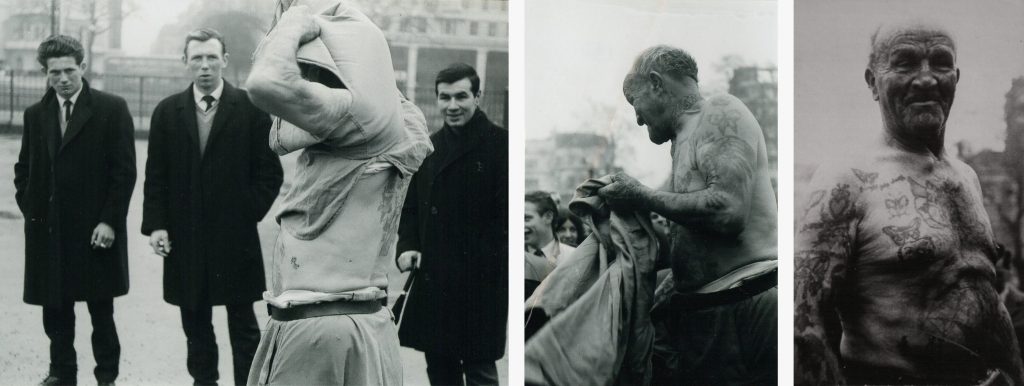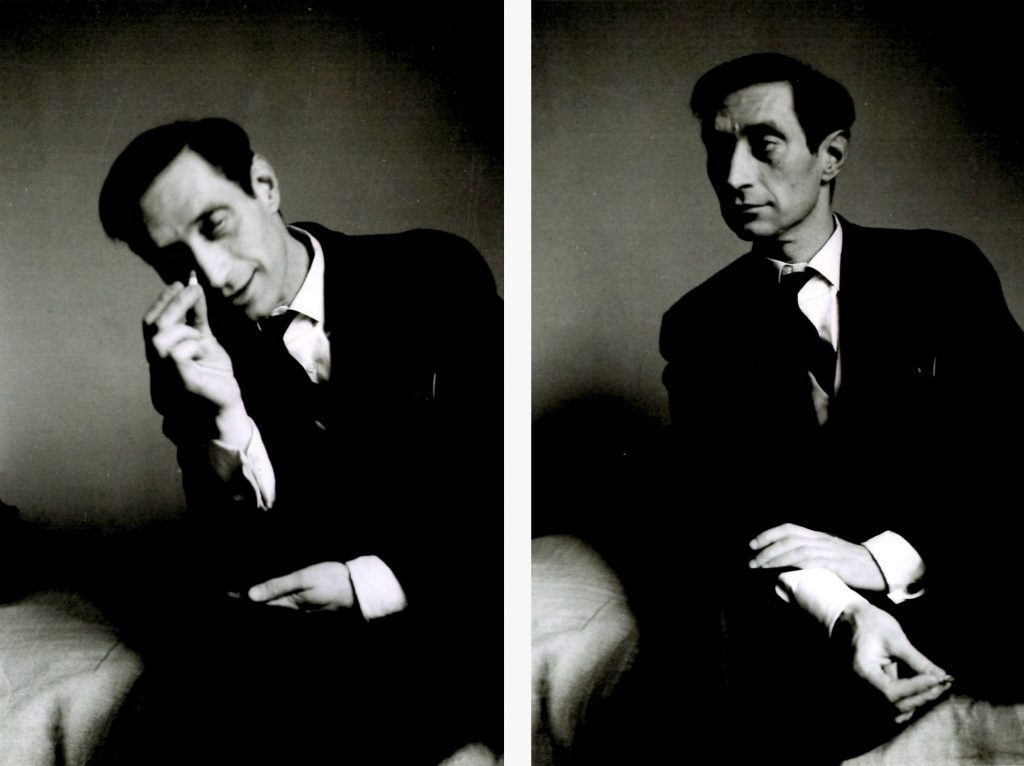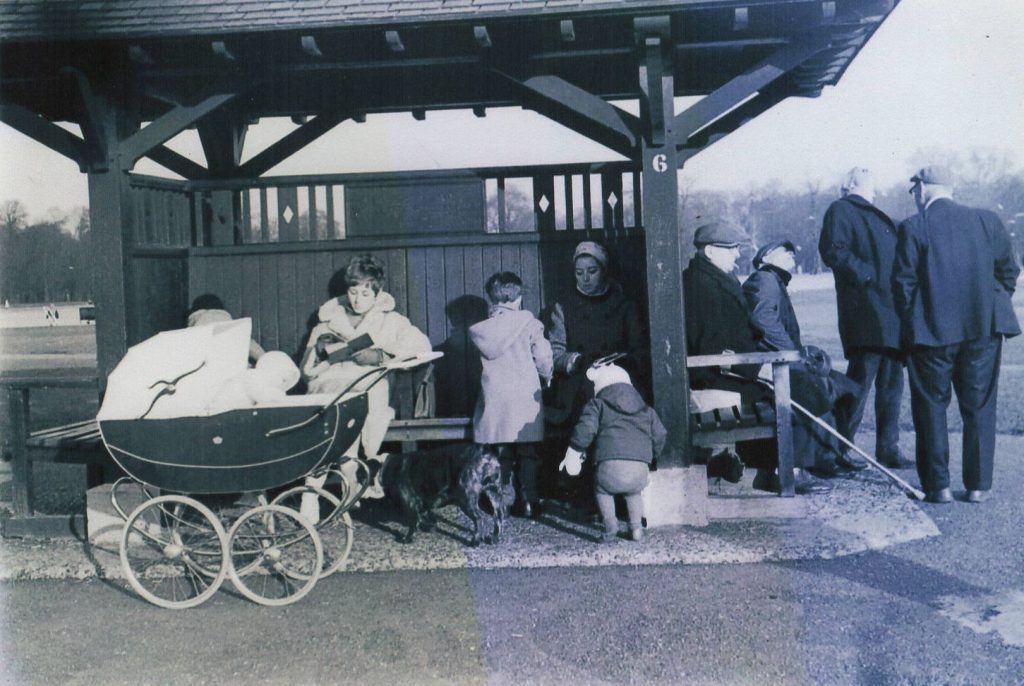An extract from the book
At Speaker’s Corner, in London in the mid to late sixties, George had uncertain legs. One worked a little, but the other didn’t work at all. He also hardly ever spoke. Although he tried, but failed.

Not far from George, Van Dyn, who looked like a cross between a log and a concrete mixer, would begin by baring his torso to reveal a mass of tattoos. He’d start in a gruff voice ‘Well, when I was up at Cambridge…’ This got everyone’s attention. It was a delicious opener, he being the very last person you’d expect to find studying the classics or being approached to spy for the Soviets. Then, after a neat well-practised pause, to get everyone ‘standing comfortably’, he’d complete the sentence with ‘…till all the alarms went off.’

While Van Dyn was very good and memorable, everything depended on what he said and how he said it. For me, George was in a different league. It was not really what he said or did, so much as what he didn’t say or do. He tried and he failed. And when he failed, we failed with him. His trying left him and us exhausted, but exhilarated as well. His act was basically just getting onto his box, without becoming impaled on the railings.
Like every speaker, George’s soap box was his pulpit. Newcomers would watch in wonder at what was going on. Some were curious to know why he didn’t put his box in the open like all the other speakers, which meant they were surrounded on all sides. Up against the railings, George could only command half a crowd, but then George was only half the man he had once been.
I am reminded of John Beard, who cared for my Granny. Once, for about a week, he positioned seed trays on her lawn to fox a badger, who had taken to digging it up for worms at night. The technique was not to place boxes in their usual positions, like in the park, but to throw them down each evening at random, so the badger, being a bit blind, could not predict where they’d be and would bump into them. It was a delightfully gentle and subtle, as well as successful, ploy to deter the creature.

Returning to George’s much more substantial box, it was placed up against the railings for his own safety. With only about four close friends ready to risk their lives catching him when he fell, this wasn’t enough to cover 360˚, if his box had been in the open. But with the railings behind him, they could just about cover 180˚. If George teetered backwards he had something to fall against and if he toppled sideways, he had the railings to cling to. He’d swing his stick to emphasise a point, but also to clear a swathe in the crowd, perhaps with a ‘Get back’, so he would not fall on the public, killing them. But whenever he swung his club he lost his balance.

The hilarity George caused was of a special order. It seemed to go deeper than that induced by jokes. It moved down the throat and into the ribs from whence it entered the soul.
No one remembered a word George said. We were far too busy being transported back to a time before words.
While one tends not to remember words, the sound of George wheezing was unforgettable. I don’t think he had any lungs. I seem to recall that during the War, his parachute had refused to cooperate when it was most needed. His twisted appearance meant you could tell he had not landed on a haystack or in a fish pond. It was a miracle he had survived, a second miracle that he was still alive and there was going to be a third, if he managed to get on his box.
People who knew nothing of George and who had come to ‘listen’, (after all it was ‘Speaker’s Corner’) would wander off, in order to hear something, not knowing they were missing the experience of a lifetime. It became apparent quite soon after he arrived, that the business of raising him a foot above the rest of us was going to be the equivalent of Hillary’s conquest of Everest. George’s friends would clear a gangway through the crowd to create a runway for him so he could get up sufficient momentum. As well as friends, he had a stick and a working ankle – two levers with which to prise himself off the ground. His first attempts were dependably unsuccessful, which meant the next would be even less likely to succeed, because by now George was wheezing like a steam press in a laundry brought down on a pair of damp trousers. Witnesses hearing this while he leant on his stick eighteen feet away from his box, about to take a ‘run’ at it, would look around nervously for a doctor. He really was in a terrible state. In spite of this, his friends would yell ‘Go wan George, you can make it’. This is how we knew he was called George.
The performance was like clowns in a circus, except there were no old cars or ladders. For props, all George had was stick and a box. For those of us who could stand it, George’s formidable effort did us a lot of good. Our memories were enamelled with something precious and long lasting, made of valour and humour. While he failed utterly in the face of such impossible odds, we were left asphyxiated from laughter, yet curiously joined to humanity and hopeful for the species.
At sunset John Beard threw down his seed trays like a dealer dealing cards, but with far less artistry, polish and aplomb. He had an awkward hesitancy, buttressed by an endearing insecurity which linked him to George. Yet John had none of George’s determination. If a breeze had struck up while he was distributing boxes, he would have fallen over. John hadn’t jumped out of an aeroplane to get dilapidated like George. He just had a natural in-built lack of harmonious elegance. He was a sweet natured, kind, gentle person, if athletically handicapped. He saw the funny side of these evening performances though and we had some laughs at his as well as the badger’s expense. I prefer the snap of him throwing two boxes at once. I think he must have been showing off.

Blurring is something I really didn’t do enough. These inanimate seed trays are caught forever not in motion, but moving. They give an indication of the shutter speed – a sixtieth of a second, because John has not blurred at all.
When I took this picture of a man sitting down, I remember thinking I would have preferred to have had my camera at a sixtieth, so he would have blurred slightly. But as I had it set at a one-hundred-and-twenty-fifth, and since I didn’t have time to alter it, he’s caught forever midway between standing and sitting. He’s seen the signals (not in the picture, ones on our side of the line), so he knows the train is not immediately due and he decides to sit. He’ll probably hear the signal as it clunks to the diagonal, bouncing slightly. He has committed himself to gravity’s care. Getting up out of a seat is a different matter. Then gravity has to be fought all the way with a series of complicated movements. He has checked the curve and is tipping himself into it, trusting the woodwork.

Just as people came to Speakers’ Corner to listen, when I took up photography I geared myself to ‘catching the moment’. It was years before I realised that opening the lens for longer, to let Time leave a more uncertain mark, was another option.

It dawned on me that the interval between two pictures can also be as interesting as a single image because such a gap admits two things: the time between the pictures and our imaginations.


Whether allowing an image to blur or creating gaps between pairs of images, Time and Space become dancing partners.

As well as separating pictures with an interval, simply pairing quite different ones can benefit both. They might be linked by a shape, a movement or by simplicity or complexity.



Sometimes a picture is already divided, like this one, which happened to be a failure. The point was that the women and children were under cover, the men outside flying their kites. The diagonal stick, the woman reading, the child in the pram, the men looking up, the women down. It’s full of potential. I should have gone closer and taken more.

With hindsight, I realise that while George’s box had to be in the same place, John’s trays needed to be strewn randomly. To advance in any medium, including thinking, progress can spring from differences, like in this instance from the difference between a crate for soap and a tray for seeds. George’s soap box had to be ‘ordered’, in that it was essential it should bear his weight and be carefully positioned, or it would not support the chaos which that ‘orator’ represented. But John’s seed trays had to be scattered chaotically, so as to maintain the order represented by a lawn’s status quo.
